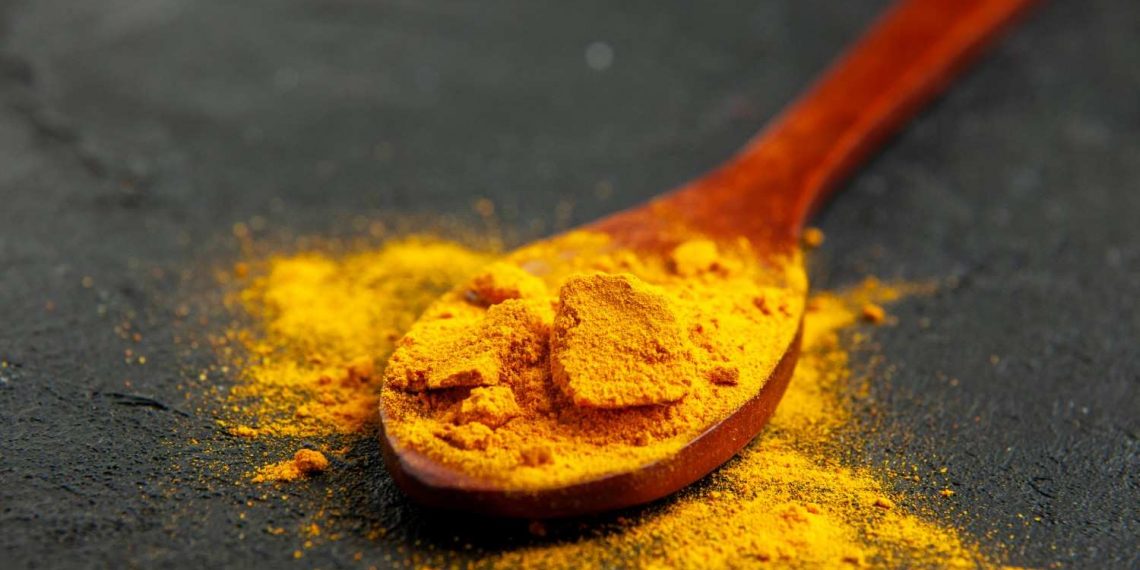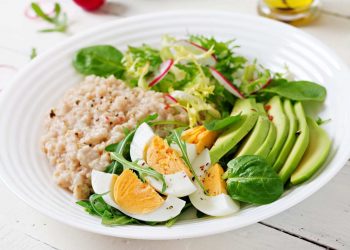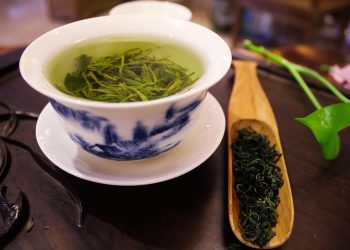Bones density spices are a surprising, delicious way to protect the frame that carries you through every day. They’re not magic, they’re powerful culinary allies: herbs and spices that support bone strength through anti-inflammatory action, mineral absorption, and hormonal balance. This matters because bone loss is quiet until it’s not—small choices in your kitchen can add years of resilience to your life and keep you moving the way you want.
I’m going to walk you through seven practical ways to use flavor to fortify your bones. I’ll back it with science you can trust, clear how-to tips, and real recipes you can start today. You’ll leave knowing what works, why it works, and how to fold it into everyday meals.
Contents
- 1. Reduce Inflammation With Turmeric For Better Bone Repair
- 2. Support Calcium Absorption With Black Pepper
- 3. Increase Mineral Density With Cinnamon’s Metabolic Boost
- 4. Promote Collagen Formation With Ginger
- 5. Balance Hormones With Fenugreek And Fennel
- 6. Add Trace Minerals With Cloves And Cumin
- 7. Support Gut Health With Garlic And Oregano
- How To Use Bones Density Spices Daily
- The Science Behind Flavor And Bone Strength
- Supplements, Dosing, And When To See A Doctor
- Extra Tips To Make Spices Work Harder For You
- Bottom Line
- FAQ
1. Reduce Inflammation With Turmeric For Better Bone Repair
Turmeric is more than golden color; it’s a biological nudge toward healthier bone remodeling. Curcumin, turmeric’s active compound, calms chronic inflammation that otherwise accelerates bone breakdown. Clinical reviews show curcumin can modulate inflammatory markers tied to osteoporosis, helping your body favor repair over loss.
Add turmeric to soups, stews, and egg dishes. Pair it with black pepper—piperine boosts curcumin absorption dramatically. A daily sprinkle in a warm milk or yogurt routine is simple and powerful.
2. Support Calcium Absorption With Black Pepper
Black pepper does more than wake up your palate. Its piperine enhances nutrient uptake across the gut lining, including compounds that support calcium use. Better absorption means the calcium you eat stands a stronger chance of becoming structural strength rather than passing through unused.
Use pepper generously where it fits—season vegetables, mix into vinaigrettes, or combine with turmeric in marinades. Think of pepper as the gatekeeper that helps nutrients reach the places they’re needed.
3. Increase Mineral Density With Cinnamon’s Metabolic Boost
Cinnamon helps regulate blood sugar and supports metabolic health, which indirectly benefits bone. Stable insulin and glucose levels reduce the hormonal stress that can interfere with bone-forming cells. Some studies point to cinnamon’s role in preserving bone mineral density in metabolic contexts.
Stir cinnamon into oatmeal, or add it to roasted root vegetables and warm beverages. It’s an easy fold-in that pays off for more than taste.
4. Promote Collagen Formation With Ginger
Ginger reduces oxidative stress and supports circulation, both vital for nourishing bone-building cells. It also helps with collagen synthesis—the protein scaffold that makes bone flexible and resilient. Research highlights ginger’s anti-inflammatory effects, which create an environment where collagen production can thrive.
Slice fresh ginger into teas, stir-fries, and salad dressings. A ginger-citrus dressing over leafy greens brings flavor and function in one.
5. Balance Hormones With Fenugreek And Fennel
Hormonal balance matters to bone. Fenugreek and fennel contain phytoestrogenic compounds that can gently support estrogenic activity without pharmaceuticals. For women especially, these spices can be a helpful part of a nutrition plan to mitigate postmenopausal bone loss when used responsibly.
Brew fennel tea or toss toasted fenugreek seeds into curries and grain dishes. Small, consistent uses are the key—think seasoning, not replacement therapy.
6. Add Trace Minerals With Cloves And Cumin
Cloves and cumin may be tiny, but they’re dense with minerals like manganese, iron, and magnesium—players in bone mineralization. They also have antioxidant properties that protect bone cells from damage. Incorporating them into meals supports the mineral economy your bones depend on.
Toast cumin and cloves before grinding to unlock flavor and absorption. Use them in legumes, roasted vegetables, and meat rubs for layered benefit.
7. Support Gut Health With Garlic And Oregano
Your gut is where bone-supporting nutrients are absorbed and where the immune system learns to calm down. Garlic and oregano both modulate gut microbiota and reduce low-grade inflammation that harms bone. A balanced gut helps you extract the calcium, vitamin K, and other cofactors bones require.
Cook garlic low and slow to preserve its beneficial compounds, and stir oregano into tomato sauces, salads, and marinades.
How To Use Bones Density Spices Daily
Start simple. Pick two or three spices from the list and make them part of routine meals. Consistency beats extremes. You don’t need complicated formulas—steady seasoning across a week builds cumulative benefit.
Try these practical habits:
- Add a pinch of turmeric and black pepper to morning yogurt or smoothies.
- Swap plain rice for a cumin-clove pilaf twice a week.
- Brew fennel or ginger tea after dinner to settle digestion and support overnight repair.
Small habits, repeated, change the chemistry of your body.
The Science Behind Flavor And Bone Strength
The link between inflammation, nutrient absorption, and bone remodeling is well established in the medical literature. Studies on curcumin reveal anti-resorptive effects on bone cells, and piperine’s absorption-enhancing properties are documented in pharmacology reports. Reviews from university research centers and hospital departments outline how chronic inflammation accelerates bone loss, while antioxidants, trace minerals, and phytoestrogens help mitigate that risk.
If you want specific studies, look to research published through academic journals and university health sites that clarify mechanisms and outcomes, showing how these spices fit into broader bone-health strategies.
Practical Safety Notes
Spices are not a substitute for medical care. If you take blood thinners, hormone therapies, or have a chronic condition, discuss any major dietary changes with your clinician. Some herbs can interact with medications or affect hormone-sensitive conditions.
Moderation matters: therapeutic doses in studies are often higher than culinary amounts. For most people, food-based doses are safe and effective as part of a balanced diet.
Easy Recipes That Build Bone-Friendly Meals
Here are three quick ideas that fold these spices into everyday eating:
- Golden Breakfast Bowl: Warm oats with turmeric, black pepper, cinnamon, and a handful of toasted nuts. Top with yogurt for calcium and probiotics.
- Mineral-Rich Stew: Slow-cooked lentils with cumin, cloves, ginger, and chopped greens. Serve over whole grains for magnesium and fiber.
- Collagen-Boost Salad: Leafy greens tossed with a dressing of olive oil, lemon, garlic, and crushed fennel seeds; add grilled salmon for protein and vitamin D.
Each recipe is a vehicle—use it to stack spices consistently over weeks and months.
Supplements, Dosing, And When To See A Doctor
If you’re considering concentrated curcumin, standardized extracts, or high-dose herbal supplements, do that with professional guidance. Supplements can help when diet falls short, but they come with risks and interactions. A bone density scan and blood tests can clarify whether you need therapeutic intervention.
A registered dietitian or endocrinologist can interpret labs and advise on safe combinations. Think of spices as a first line, supplements as targeted reinforcement, and clinicians as your guide when things are out of the ordinary.
Extra Tips To Make Spices Work Harder For You
- Combine fat with turmeric and curcumin—these are fat-soluble and absorb better with healthy oils.
- Use freshly ground spices for higher potency; old jars lose punch.
- Layer spices across meals rather than over-seasoning one dish. Diversity creates broader nutrient play.
These small techniques boost efficacy without adding extra steps to your day.
Bottom Line
Bones density spices are practical, evidence-aligned tools you can use every day to support bone health. They reduce inflammation, improve nutrient absorption, and supply trace minerals—actions that all favor stronger bones. Use them consistently, pair them with calcium-rich foods, vitamin D, and weight-bearing movement, and check in with your clinician when you need personalized guidance.
You don’t have to overhaul your life. Spice up meals, protect your bones, and keep living boldly.
I believe in flavor that heals. Try one change this week and notice how it feels.
FAQ
Will adding spices replace the need for calcium or vitamin D?
No. Spices support nutrient absorption and reduce inflammation, but they do not replace calcium or vitamin D. Combine spices with calcium-rich foods and sensible sun exposure or supplementation when needed.
Can spices interact with medications?
Yes. Some spices, especially in extract or high-dose form, can interact with blood thinners, hormone therapies, and certain chronic medications. Talk with your prescribing physician before starting concentrated supplements.
How quickly will I see benefits from using these spices?
Bone changes are gradual. You may notice better digestion, less joint discomfort, or improved energy within weeks, but bone density improvements take months to years. Think long game and steady application.
Are there people who should avoid certain bone-supporting spices?
Pregnant people, those with bleeding disorders, or individuals on immunosuppressants should get personalized advice. Culinary amounts are generally safe, but therapeutic doses need oversight.
References
- The National Institutes of Health Office of Dietary Supplements provides evidence-based information on dietary supplements and bone health (http://ods.od.nih.gov).
- Harvard Medical School has accessible summaries linking inflammation, diet, and bone health in patient-friendly language (http://www.health.harvard.edu).
- The Mayo Clinic offers guidelines on osteoporosis diagnosis and nonpharmacologic strategies that include diet and lifestyle (http://www.mayoclinic.org).
- PubMed lists peer-reviewed studies on curcumin, piperine, and bone remodeling for clinicians and researchers (http://pubmed.ncbi.nlm.nih.gov).
Get Your FREE Natural Health Guide!
Subscribe now and receive our exclusive ebook packed with natural health tips, practical wellness advice, and easy lifestyle changes — delivered straight to your inbox.














